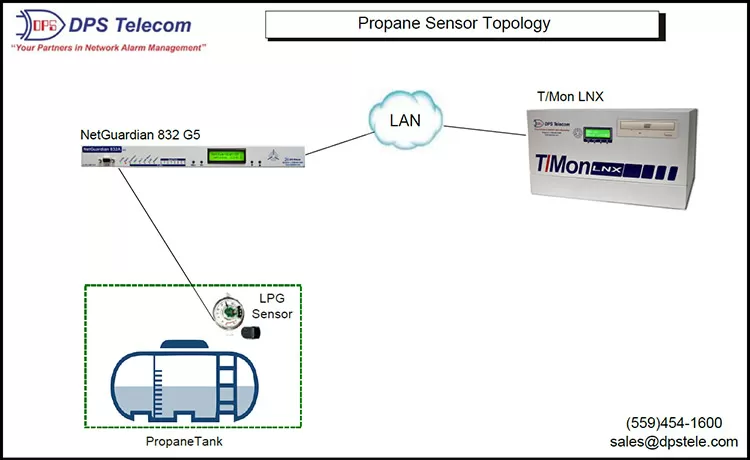Check out our White Paper Series!
A complete library of helpful advice and survival guides for every aspect of system monitoring and control.
1-800-693-0351
Have a specific question? Ask our team of expert engineers and get a specific answer!
Sign up for the next DPS Factory Training!

Whether you're new to our equipment or you've used it for years, DPS factory training is the best way to get more from your monitoring.
Reserve Your Seat TodayBack in 2018, a senior salesman here at DPS was getting frustrated at his inability to answer this question effectively:
"Don't I have to drain my propane tank to install a sensor for monitoring?"
In most cases, you actually don't. He was having a hard time getting the point across, however, so I made this simple video explanation on a Saturday at my desk:
A few years (and tens of thousands of views) later, that humble demonstration of a typical magnetic float from a propane tank (plus a machine-readable gauge and an R3D potting cap) leads to multiple inbound calls every week.
Mostly, I hear from homeowners who want to track the status of their own tanks. That wasn't my intention, and DPS solutions are usually overbuilt for anything but commercial use, but I'll still help you out if you call me. I've learned some solid options for consumers that I can suggest.
If you're here because you have radio sites, tower sites, substations, or other important facilities that use propane generators for backup power, I wrote this article with you in mind. If you have diesel, all the same principles apply. We'd simply use a slightly different sensor for the tank.
If you manage remote sites for your company or agency, you're probably bumping up against several common concerns:
When you start shopping for solutions, you might feel like you're the first person to have these concerns. Let me assure you: I've helped hundreds of county radio officials, telco engineers, utility substation personnel, and others to remotely monitor their fuel tanks.
Let's assume for a moment that you only have the first two concerns on the list above. You must monitor your fuel level, and you don't want to drain your tank. You are able to run copper wire to your tank, however, because lightning isn't a big concern. Maybe you already have an underground conduit, so running wire isn't difficult.
In that case, you might use a solution like this one:

If you're like a lot of the DPS clients I work with, however, running that wire to your propane tank is not an option. In your case, you need to buy a wireless solution for monitoring propane.
Much of this solution is the same as the one above. We're simply adding a wireless bridge to carry the analog signal.
Earlier versions of this application from DPS included a replaceable lithium battery. That worked, but it's never perfect if you have to visit a site to replace a battery every 6-24 months (depending on usage).
That's why, in the installation shown below, I've included a small solar panel and a rechargeable battery. While this does represent a higher price initially, it compares favorably to the expense of digging a trench. It also tends to pay for itself after a few eliminated site visits that aren't needed to replace a lithium battery.

After the surprise success of my first YouTube video on this topic, I decided to shoot another one. This time, I used the DPS lightboard studio to draw a diagram of the solution:
This does a few things. First, it gives you a solid walkthrough about how to monitor your fuel tanks, whether wired or wirelessly.
Second, it helps me to clarify that DPS equipment is mainly designed for commercial use at telecommunications facilities. If you're a rural homeowner (or RV owner) with a propane tank, I'll happily take your call and direct you to solid information. My goal with this video, though, is not to mislead you about the true nature of DPS remote monitoring and control systems.
You know, the universe has a funny way of working out. You might successfully run your operation with unmonitored propane/diesel tanks for years. You get lucky, and you don't have an incident.
Once you know about the threat, however, the clock is ticking. After reading this article, you can no longer plead ignorance. You need to choose a solution and get it installed.
Fortunately, I've also given you a framework for choosing a propane monitoring system, whether or not you end up buying from DPS.
Consider all of your available options, take a moment to think, then make a call.
To discuss your options with me (or a DPS engineer), give DPS a call at 559-454-1600. You can also email us at sales@dpstele.com

Andrew Erickson
Andrew Erickson is an Application Engineer at DPS Telecom, a manufacturer of semi-custom remote alarm monitoring systems based in Fresno, California. Andrew brings more than 19 years of experience building site monitoring solutions, developing intuitive user interfaces and documentation, and opt...